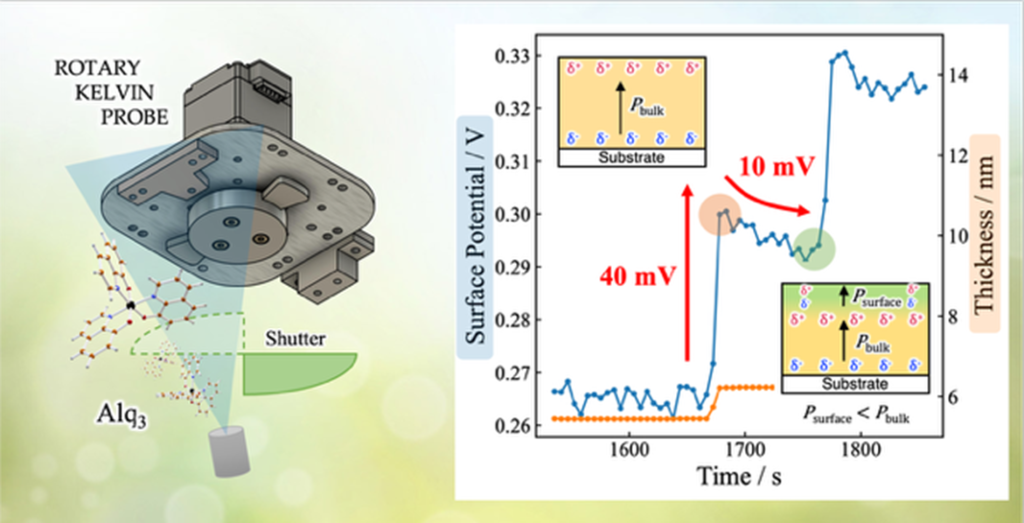
“When depositing organic molecules by vacuum deposition, the orientation of the molecules is changed over time by pausing the deposition. Moreover, by changing the deposition conditions, it is possible to invert the orientation of both the head- and tail-end of the molecules,” says Professor Hisao Ishii who led the team.
These findings are expected to aid the improvement of the efficacy and durability of OLEDs.

A schematic of the apparatus developed for the vacuum deposition method. The primary component of the rotary Kelvin probe features a rotary electrode and its surroundings.
Organic optoelectronic devices, such as organic light-emitting diodes (OLEDs), use molecules with specific structures arranged on thin films. Additionally, the arrangement of these molecules on any surface is crucial for various processes that occur within these devices.
This arrangement is guided by two primary factors: the deposition rate (how fast the molecules are placed) and the surface temperature. Slower deposition rates and higher temperatures facilitate the proper arrangement, resulting in more stable structures.
Finding the right time scale for this process is also critical, and researchers are now looking for ways to control these factors for optimal molecular arrangement on surfaces.
In their study, the team found a simple yet ingenious way to control the orientation of molecules deposited on aluminum and benzene-containing thin films, denoted as Alq3 and TPBi, respectively.
They used a method called “intermittent deposition,” which introduces breaks during the deposition process, and developed an updated version of a tool called “rotary Kelvin probe” (RKP). This was used to measure the surface potential (voltage on the material’s surface) during and after the deposition in real-time.
By repeatedly opening and closing the deposition shutter at specific intervals, the researchers could change the polarization (the distribution of charges), influencing how the molecules were oriented on the films.
The new approach of intermittent deposition created a relaxed and stable surface layer with controllable polarization. The study also revealed how surface relaxation affected molecular orientation and the formation of a potential valley (shaped like a “V”). In fact, this deposition method enables the creation of an arbitrary potential profile for desired molecular orientations on the thin film of interest.
In terms of applications, this intermittent deposition technique can enhance the effectivity and lifetime of OLED materials. In addition, it can also be used for non-polar organic molecules, making it useful for devices like organic photovoltaic cells and transistors.
“This method is expected to further improve the efficiency and lifetime of OLEDs,” says Ishii, “beyond OLEDs, it also promotes the development of other organic devices, such as organic memory devices. Therefore, replacing conventional inorganic devices with organic devices will make lightweight and flexible devices readily available.”






